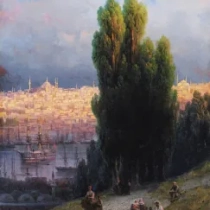 1817 - 1900
academic classicism
1817 - 1900
academic classicism
Description Ivan Konstantinovich Aivazovsky
Ivan Konstantinovich Aivazovsky, born on July 29, 1817, in Feodosia, Crimea, emerged as the unrivaled master of marine art during the 19th century. His life unfolded against the dramatic backdrop of Russia's Golden Age, witnessing political upheavals and cultural flourishing.
Aivazovsky's affinity for the sea, nurtured by his coastal hometown, manifested early. His talent earned him a spot at the Imperial Academy of Arts in St. Petersburg, where he defied academic norms, captivating tutors with his unique approach to marine painting.
His breakthrough came with "The Ninth Wave," a mesmerizing depiction of a storm-tossed sea. Aivazovsky's ability to capture the sublime power of the ocean set him apart. His mastery of light and movement, showcased in works like "Brig Mercury Attacked by Two Turkish Ships," revealed a symbiotic relationship between artist and sea.
Aivazovsky's fame extended beyond Russia, securing commissions from European royalty. His art adorned palaces and private collections, earning him international acclaim. Aivazovsky's use of luminosity and dynamic compositions resonated with the Romantic spirit of the era.
Beyond marine scenes, Aivazovsky's versatility embraced Orientalist themes, historical tableaux, and portraiture. His fascination with exotic locales, evident in "View of Constantinople" and "Armenian Women with Tambourines," demonstrated a cosmopolitan flair.
Aivazovsky's personal life, marked by tragedy and resilience, added depth to his artistic narrative. His philanthropy, including funding Armenian educational initiatives, mirrored his commitment to social causes. The death of his first wife and the destruction of his Crimean home by the British during the Crimean War tested his spirit, yet Aivazovsky continued to paint with undiminished vigor.
Aivazovsky lived through seismic political shifts, from the Tsarist era to the Soviet Union. His longevity allowed him to witness the evolving perception of his art. Despite ideological changes, Aivazovsky's legacy persisted, with Soviet authorities recognizing his contribution to Russian culture.
Ivan Aivazovsky passed away on May 5, 1900, in Feodosia. His artistic legacy, characterized by a profound connection to the sea and a mastery of marine atmospheres, endures as a beacon of Romanticism. Aivazovsky's paintings, with their evocative power and timeless beauty, remain portals to the vast and turbulent world he so brilliantly translated onto canvas.
Gallery
Paintings Ivan Konstantinovich Aivazovsky
Quotes
The palette of the artist is not limited to colors, but also includes the shades of the sea.
In the presence of the sea, a restless soul is calm, and in the face of the boundless ocean, even the most ambitious dreams seem achievable.
The sea is a universe of its own—a mysterious world that hides its secrets in the depths.
A true artist paints not what he sees, but what he feels.
The waves of the sea help me get back to me.
F.A.Q Section
"The Ninth Wave" (1850): A dramatic painting depicting a shipwrecked crew struggling against the elements.
"The Black Sea Fleet in Winter at Feodosia" (1848): A majestic portrayal of the Russian Black Sea Fleet at anchor in a winter seascape.
Aivazovsky's seascapes are celebrated for their dynamic compositions, realistic depictions of water, and the play of light on the waves.



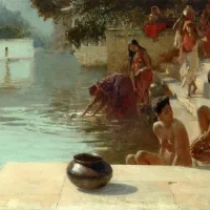


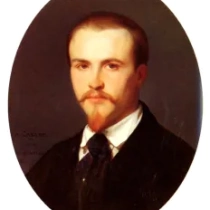
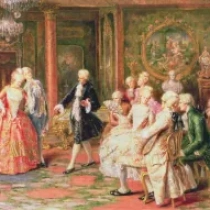

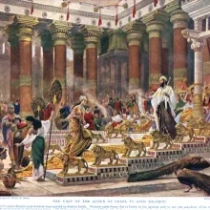



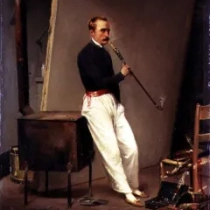

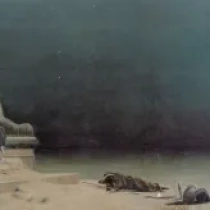





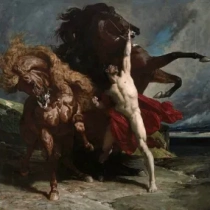


No Comments Yet...